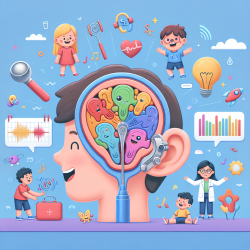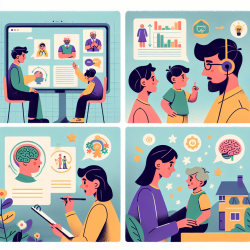Understanding Cochlear Implant Outcomes in Pediatric Auditory Neuropathy
As a practitioner in the field of speech-language pathology, it's crucial to stay informed about the latest research to optimize the outcomes for children with hearing impairments. A recent study titled Predictors of Cochlear Implant Outcomes in Pediatric Auditory Neuropathy: A Matched Case-Control Study provides valuable insights that can enhance your practice.
Key Findings from the Study
This study explored the outcomes of cochlear implants (CIs) in children with auditory neuropathy spectrum disorder (ANSD) compared to those with sensorineural hearing loss (SNHL). The research involved 66 children, including 22 with ANSD and 44 with SNHL, matched on several factors like age and length of CI use.
Here are the significant findings:
- Both ANSD and SNHL groups achieved high scores in post-CI speech perception outcomes, with no significant differences between them.
- Speech perception scores were positively associated with younger ages at hearing aid fitting and CI activation, as well as longer follow-up with CIs.
- Three variables showed predictive value for better outcomes: longer use of CIs, lower age at CI activation, and the use of bilateral CIs.
Implications for Practice
These findings underscore the importance of early intervention and consistent follow-up in children with hearing impairments. As a practitioner, you can implement these strategies to improve outcomes:
- Early Diagnosis and Intervention: Encourage early hearing assessments and interventions. The study highlights the benefits of CI activation before the age of three.
- Regular Follow-Up: Ensure regular follow-up appointments to monitor the child's progress and make necessary adjustments to their CI settings.
- Bilateral Cochlear Implants: Consider the use of bilateral CIs to enhance speech perception, especially in noisy environments.
Encouraging Further Research
While this study provides valuable insights, it also highlights areas for further research. Factors such as genetics, socioeconomic status, and cognitive abilities could also influence CI outcomes. As practitioners, staying informed about ongoing research and contributing to the body of knowledge through your observations and case studies can be immensely beneficial.
Conclusion
The study demonstrates that children with ANSD can achieve similar speech perception outcomes as their peers with SNHL when provided with timely and appropriate interventions. By focusing on early diagnosis, consistent follow-up, and the use of bilateral CIs, practitioners can significantly improve the auditory and speech outcomes for children with hearing impairments.
To read the original research paper, please follow this link: Predictors of cochlear implant outcomes in pediatric auditory neuropathy: A matched case-control study.










